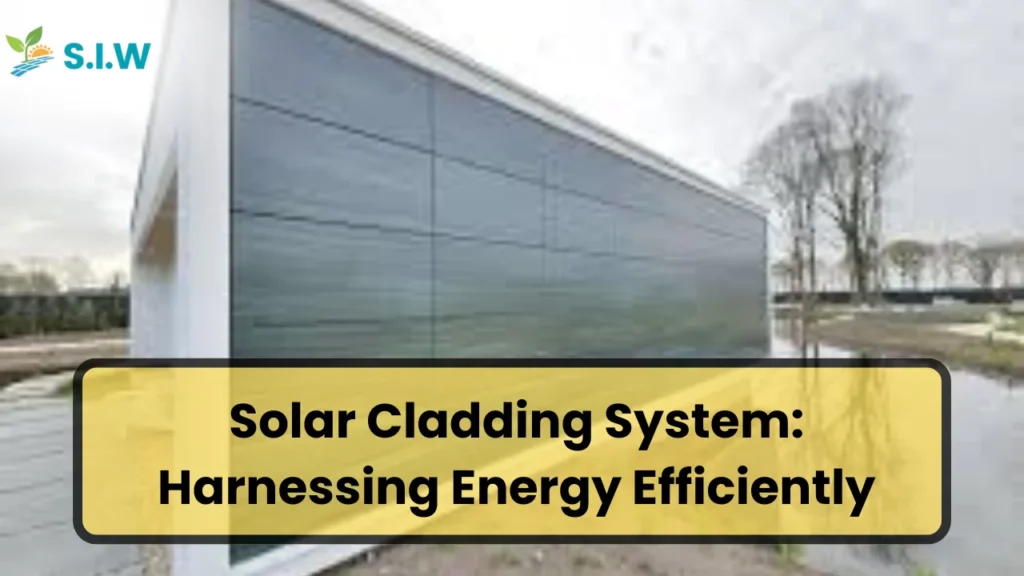A solar cladding system is an innovative way to incorporate solar energy technology into the design of buildings. Essentially, it involves covering the exterior surfaces of a building with materials that have solar energy-generating capabilities. This integration of solar technology not only enhances the aesthetic appeal of structures but also contributes to energy efficiency and sustainability.
The Benefits of a Solar Cladding System
Solar cladding systems offer numerous advantages. For starters, they enable buildings to generate their own electricity while enhancing their visual appeal. They can help reduce energy bills and carbon footprints, making them a win-win solution for both the environment and building owners.
How Solar Cladding Works
The solar cladding system typically consists of photovoltaic panels integrated into the cladding material. These panels convert sunlight into electricity, which can be used to power the building. By utilizing this technology, buildings can harness renewable energy directly from their facades, maximizing space and efficiency.
Personal Experience with Solar Cladding
In my experience working with sustainable building solutions, I have seen firsthand the positive impact that solar cladding systems can have on energy consumption. For example, a client of mine implemented a solar cladding system on their commercial property, leading to a significant reduction in energy costs over time. The visually appealing design attracted attention and improved the building’s market value.
Choosing the Right Solar Cladding System
When selecting a solar cladding system, several factors come into play. The type of building, local climate conditions, and aesthetic preferences are essential considerations. It’s crucial to consult with experts to determine the most suitable materials and designs for your specific needs.
Installation Process
The installation of a solar cladding system involves several steps. First, a structural assessment is conducted to ensure the building can support the added weight of the solar panels. Next, the cladding material is selected, and the PV panels are integrated into the design. Proper installation is vital to maximize efficiency and longevity.
Cost Considerations
While the initial investment for a solar cladding system may seem high, it is important to consider the long-term savings on energy bills. Many governments offer incentives and rebates for renewable energy projects, making it more affordable for property owners. Additionally, the return on investment can be substantial over the lifespan of the system.
Maintenance and Durability
One of the significant benefits of solar cladding systems is their durability. High-quality materials are designed to withstand harsh weather conditions, requiring minimal maintenance. Regular cleaning and inspections can help ensure optimal performance throughout the years.
Environmental Impact
Solar cladding systems contribute to a reduction in greenhouse gas emissions by harnessing renewable energy. This aligns with global efforts to combat climate change and promote sustainable practices. By investing in solar panel technology, property owners can play a part in protecting the environment.
Future of Solar Cladding
The future of solar cladding systems looks promising. As technology advances, we can expect even more efficient materials and designs. This innovation will likely lead to greater adoption in residential and commercial buildings alike, promoting sustainability on a larger scale.
Summary
In conclusion, solar cladding systems represent an exciting development in sustainable building design. By integrating solar technology into the fabric of our buildings, we can create energy-efficient structures that benefit both the environment and the economy. Whether you’re a building owner or an architect, considering a solar cladding system could be a pivotal step toward a greener future.
FAQs
- What is the primary function of a solar cladding system?
A solar cladding system generates electricity by integrating photovoltaic panels into building facades, helping to reduce energy costs. - How much energy can a solar cladding system generate?
The energy output depends on several factors, including the size of the panels, orientation, and local sunlight conditions. Many systems can significantly offset a building’s energy consumption. - Are there government incentives for installing solar cladding systems?
Yes, many governments offer tax credits, rebates, and other financial incentives to promote renewable energy adoption, making it more affordable to install solar cladding. - What maintenance is required for solar cladding systems?
Solar cladding systems require minimal maintenance. Regular cleaning and occasional inspections can ensure they operate efficiently over time. - Can solar cladding be installed on any building?
While most buildings can benefit from solar cladding, factors such as structural integrity, local climate, and design preferences should be considered to ensure proper installation and effectiveness.
For expert guidance on solar cladding systems, don’t hesitate to get a quote today! Our team is ready to help you make the best choice for your energy needs.








